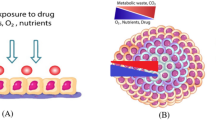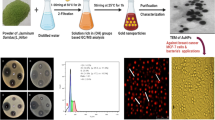Abstract
In this study, we conducted a comprehensive assessment of the cytotoxicity of three glucocorticoids, namely Hydrocortisone, Dexamethasone, and Methylprednisolone, using three different human cell lines: MDA-MB-231, MCF-7 (both adenocarcinoma cell lines), and HEK293 (kidney epithelial cell line). At lower concentrations exceeding 50 µM, we did not observe any significant toxic effects of these glucocorticoids. However, when exposed to higher concentrations, Hydrocortisone exhibited dose-dependent cytotoxic effects on all three cell lines, with calculated IC50 values of 12 ± 0.6 mM for HEK293, 2.11 ± 0.05 mM for MDA-MB-231, and 2.73 ± 0.128 mM for MCF-7 cells after 48 h of exposure. Notably, Hydrocortisone, at its respective IC50 concentrations, demonstrated an inhibitory effect on the proliferation of the cancer cell lines, as evidenced by a substantial reduction in BrdU absorbance in a dose-dependent manner, coupled with a markedly reduced rate of colony formation in treated cells. Furthermore, Hydrocortisone exhibited remarkable anti-migratory properties in MDA-MB-231 and MCF-7 cells, and it induced cell cycle arrest in the SubG1 phase in MDA-MB-231 cells. In addition to these effects, Hydrocortisone triggered apoptosis in both cancer cell types, leading to observable morphological changes. This apoptotic response was characterized by a significant increase in the activity of caspase-3, which was time-dependent. Additionally, Hydrocortisone downregulated the expression of anti-apoptotic Bcl-2 proteins. In summary, our findings underscore the safety of clinical doses in terms of cell toxicity meanwhile increased concentration were showing an anti-proliferative potential of Hydrocortisone, particularly against adenocarcinoma breast cancer cell lines.








Similar content being viewed by others
Data availability
All data is available in the article.
References
Kumar R. Emerging role of glucocorticoid receptor in castration resistant prostate cancer: a potential therapeutic target. J Cancer. 2020;11(3):696–701.
Xing K, Gu B, Zhang P, Wu X. Dexamethasone enhances programmed cell death 1 (PD-1) expression during T cell activation: an insight into the optimum application of glucocorticoids in anti-cancer therapy. BMC Immunol. 2015;16(1):1–9.
Inaba H, Pui C-H. Glucocorticoid use in acute lymphoblastic leukaemia. Lancet Oncol. 2010;11(11):1096–106.
Parisi D, Adasme MF, Sveshnikova A, Bolz SN, Moreau Y, Schroeder M. Drug repositioning or target repositioning: A structural perspective of drug–target–indication relationship for available repurposed drugs. Comput Struct Biotechnol J. 2020;18:1043–55.
van der Goes MC, Jacobs JW, Bijlsma JW. The value of glucocorticoid co-therapy in different rheumatic diseases—positive and adverse effects. Arthritis Res Ther. 2014;16(Suppl 2):S2.
Barnes PJ. Molecular mechanisms of corticosteroids in allergic diseases. Allergy. 2001;56(10):928–36.
Dashti-Khavidaki S, Saidi R, Lu H. Current status of glucocorticoid usage in solid organ transplantation. World J Transplant. 2021;11(11):443–65.
Flynn JK, Dankers W, Morand EF. Could GILZ be the answer to glucocorticoid toxicity in lupus? Front Immunol. 2019;10:1684–6.
Cain DW, Cidlowski JA. Immune regulation by glucocorticoids. Nat Rev Immunol. 2017;17(4):233–47.
Shetty K, Sherje AP. Nano intervention in topical delivery of corticosteroid for psoriasis and atopic dermatitis—a systematic review. J Mater Sci Mater Med. 2021;32(8):88.
Reinhart WH. Steroidtherapie. Praxis. 2005;94(7):239–43.
Manser R, Reid D, Abramson MJ. Corticosteroids for acute severe asthma in hospitalised patients. Cochrane Database Syst Rev. 2001. https://doi.org/10.1002/14651858.CD001740.
Suehs CM, Menzies-Gow A, Price D, Bleecker ER, Canonica GW, Gurnell M, Bourdin A. Expert consensus on the tapering of oral corticosteroids for the treatment of asthma. A delphi study. Am J Respir Crit Care Med. 2021;203(7):871–81.
Sneeboer MMS, Hutten BA, Majoor CJ, Bel EHD, Kamphuisen PW. Oral and inhaled corticosteroid use and risk of recurrent pulmonary embolism. Thromb Res. 2016;140:46–50.
Ravelli A, Lattanzi B, Consolaro A, Martini A. Glucocorticoids in paediatric rheumatology. Clin Exp Rheumatol Incl Suppl. 2011;29(5):S148.
Paragliola RM, Papi G, Pontecorvi A, Corsello SM. Treatment with synthetic glucocorticoids and the hypothalamus–pituitary–adrenal axis. Int J Mol Sci. 2017;18(10):2201.
Curtiss PH Jr, Clark WS, Herndon CH. VERTEBRAL FRACTURES RESULTING FROM PROLONGED CORTISONE AND CORTICOTROPIN THERAPY. J Am Med Assoc. 1954;156(5):467–9.
van Staa TP. The pathogenesis, epidemiology and management of glucocorticoid-induced osteoporosis. Calcif Tissue Int. 2006;79(3):129–37.
Matusik E, Durmala J, Ksciuk B, Matusik P. Body composition in multiple sclerosis patients and its relationship to the disability level. Dis Durat Glucocorticoid Ther Nutr. 2022;14(20):4249.
Khojah A, Liu V, Morgan G, Shore RM, Pachman LM. Changes in total body fat and body mass index among children with juvenile dermatomyositis treated with high-dose glucocorticoids. Pediatr Rheumatol. 2021;19(1):118.
Clore JN, Thurby-Hay L. Glucocorticoid-induced hyperglycemia. Endocr Pract. 2009;15(5):469–74.
Wei L, MacDonald TM, Walker BR. Taking glucocorticoids by prescription is associated with subsequent cardiovascular disease. Ann Intern Med. 2004;141(10):764–70.
Warrington TP, Bostwick JM. Psychiatric adverse effects of corticosteroids. Mayo Clin Proc. 2006;81(10):1361–7.
Kenna HA, Poon AW, de los Angeles CP, Koran LM. Psychiatric complications of treatment with corticosteroids: review with case report. Psychiatry Clin Neurosci. 2011;65(6):549–60.
Heffelfinger AK, Newcomer JW. Glucocorticoid effects on memory function over the human life span. Dev Psychopathol. 2001;13(3):491–513.
Glück T, Kiefmann B, Grohmann M, Falk W, Straub RH, Schölmerich J. Immune status and risk for infection in patients receiving chronic immunosuppressive therapy. J Rheumatol. 2005;32(8):1473–80.
Jick SS, Lieberman ES, Rahman MU, Choi HK. Glucocorticoid use, other associated factors, and the risk of tuberculosis. Arthritis Rheum. 2006;55(1):19–26.
Blackburn D, Hux J, Mamdani M. Quantification of the risk of corticosteroid-induced diabetes mellitus among the elderly. J Gen Intern Med. 2002;17(9):717–20.
Rice JB, White AG, Scarpati LM, Wan G, Nelson WW. Long-term systemic corticosteroid exposure: a systematic literature review. Clin Ther. 2017;39(11):2216–29.
Buxant F, Kindt N, Laurent G, Noël J-C, Saussez S. Antiproliferative effect of dexamethasone in the MCF-7 breast cancer cell line. Mol Med Rep. 2015;12(3):4051–4.
Pang JM, Huang Y-C, Sun S-P, Pan Y-R, Shen C-Y, Kao M-C, Wang R-H, Wang L-H, Lin K-T. Effects of synthetic glucocorticoids on breast cancer progression. Steroids. 2020;164: 108738.
Obradović MMS, Hamelin B, Manevski N, Couto JP, Sethi A, Coissieux M-M, Münst S, Okamoto R, Kohler H, Schmidt A, Bentires-Alj M. Glucocorticoids promote breast cancer metastasis. Nature. 2019;567(7749):540–4.
Glucocorticoid doses—Search results. Page 1 of about 41839 results. https://www.drugs.com/search.php?searchterm=glucocorticoid+doses.
Longui CA, Santos MC, Formiga CB, Oliveira DVA, Rocha MN, Faria CDC, Kochi C, Monte O. Antiproliferative and apoptotic potencies of glucocorticoids: nonconcordance with their antiinflammatory and immunossuppressive properties. Arq Bras Endocrinol Metab. 2005;49:378–83.
Dobos J, Kenessey I, Tímár J, Ladányi A. Glucocorticoid receptor expression and antiproliferative effect of dexamethasone on human melanoma cells. Pathol Oncol Res. 2011;17(3):729–34.
Lippman M, Bolan G, Huff K. The effects of glucocorticoids and progesterone on hormone-responsive human breast cancer in long-term tissue culture. Can Res. 1976;36(12):4602–9.
Herbelet S, De Paepe B, De Bleecker JL. Description of a novel mechanism possibly explaining the antiproliferative properties of glucocorticoids in Duchenne muscular dystrophy fibroblasts based on glucocorticoid receptor GR and NFAT5. Int J Mol Sci. 2020;21(23):9225.
Kofler R. The molecular basis of glucocorticoid-induced apoptosis of lymphoblastic leukemia cells. Histochem Cell Biol. 2000;114:1–7.
Funding
The authors declare that no funds, grants, or other support were received during the preparation of this manuscript.
Author information
Authors and Affiliations
Contributions
All authors contributed to the study conception and design. Material preparation, data collection and analysis were performed by DM, FJ, JE-M, BH, ES and SA. The first draft of the manuscript was written by DM and SA. All authors commented on previous versions of the manuscript. All authors read and approved the final manuscript.
Corresponding author
Ethics declarations
Competing interests
The authors have non-financial interests to disclose.
Additional information
Publisher's Note
Springer Nature remains neutral with regard to jurisdictional claims in published maps and institutional affiliations.
Rights and permissions
Springer Nature or its licensor (e.g. a society or other partner) holds exclusive rights to this article under a publishing agreement with the author(s) or other rightsholder(s); author self-archiving of the accepted manuscript version of this article is solely governed by the terms of such publishing agreement and applicable law.
About this article
Cite this article
Msalbi, D., Jellali, F., Elloumi-Mseddi, J. et al. Toxicity evaluation of synthetic glucocorticoids against breast cancer cell lines MDA-MB-231, MCF-7 and human embryonic kidney HEK293. Med Oncol 40, 309 (2023). https://doi.org/10.1007/s12032-023-02189-1
Received:
Accepted:
Published:
DOI: https://doi.org/10.1007/s12032-023-02189-1




